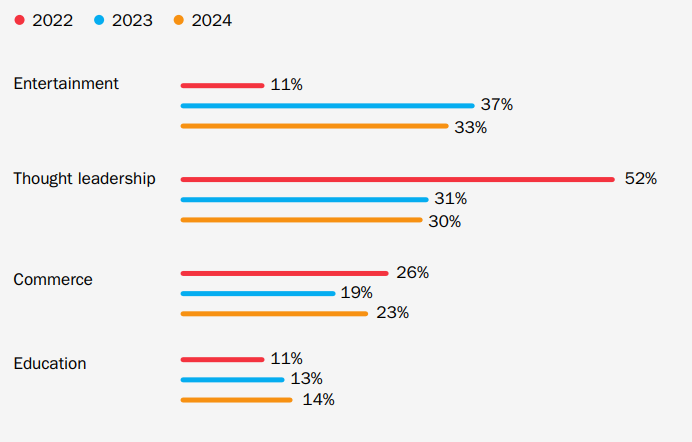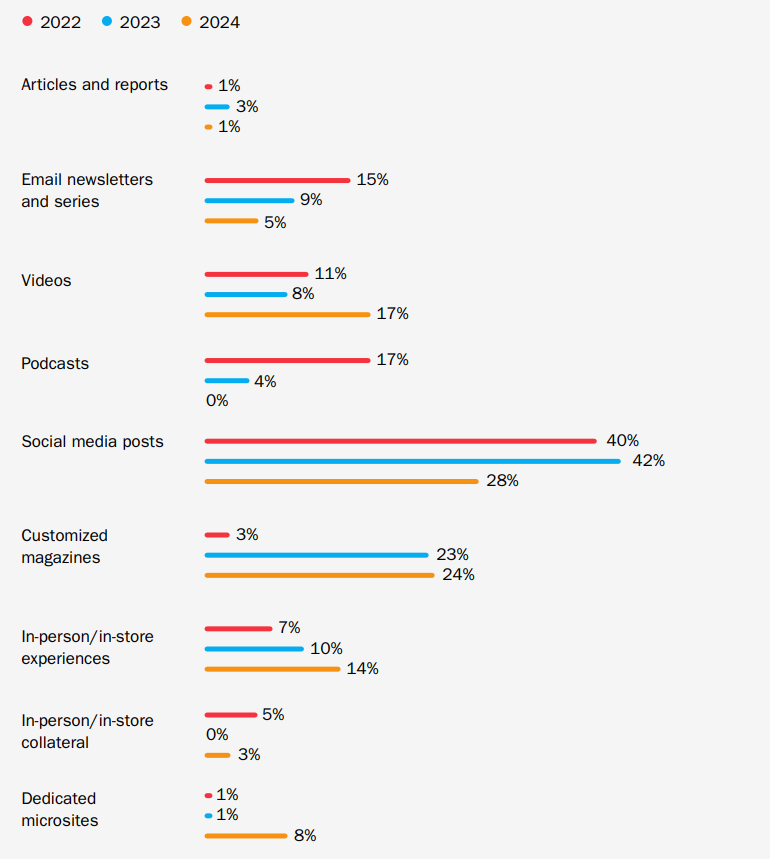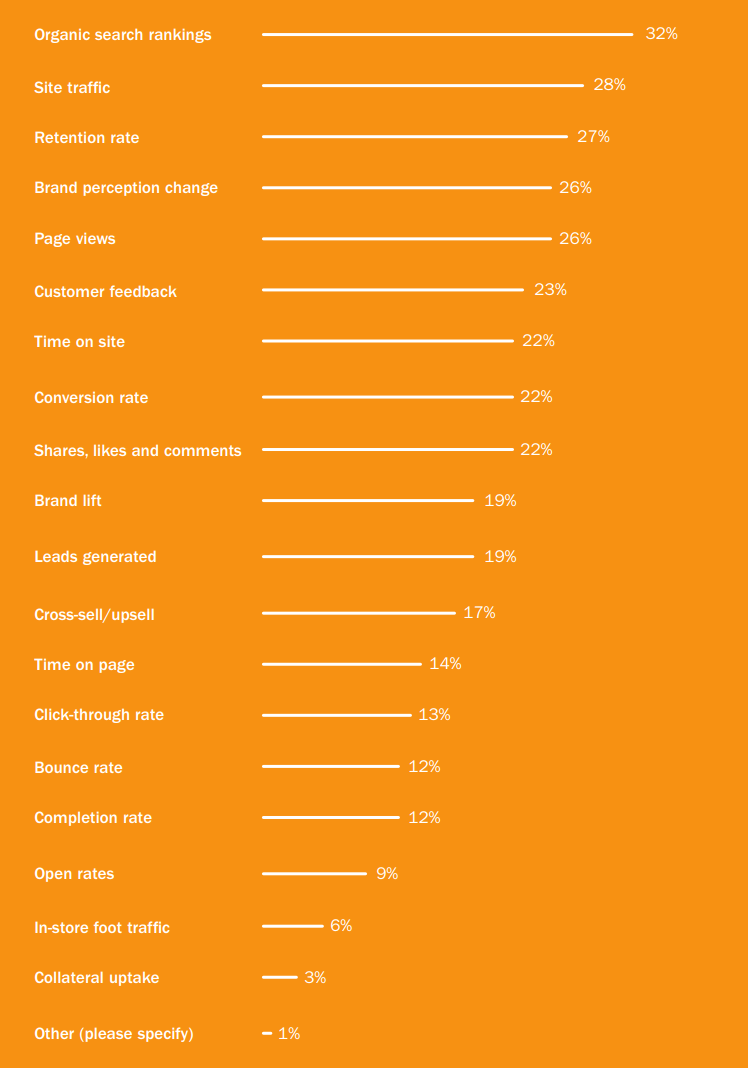Digiday and Foundry 360 recently published the “The State of Content Marketing” report to analyze shifts in content marketing amid today’s volatile business landscape. The report emphasizes that to stay effective, brands need to invest in creative, multi-channel content. This requires marketers to stay ahead of trends and adapt strategies to keep pace with rapid changes.
A key point in this year’s report is the increased investment in owned channels, including brand websites and social media platforms. Additionally, outsourcing for content marketing is becoming more common in 2025, especially for large-scale content campaigns. Here are some highlights from the “The State of Content Marketing” report by Digiday and Foundry 360:
Entertainment – The Leading Factor in Content Creation
According to the survey, creating entertaining content is increasingly prioritized, with 37% of brands favoring this approach in 2023. Thought leadership has dropped to 31% from 2022 and is expected to remain secondary to entertainment in 2024. However, while educational content is less emphasized, it remains a reliable strategy for building trust.


Shifts in Communication Goals Over the Years
- Optimizing Owned Channels: Creating engaging, interactive content on owned channels is a crucial factor.
- Leveraging Video: Investing in video effectively communicates brand messages and captivates audiences.
- Email Marketing Strategy: Personalized, compelling email content increases open and engagement rates.
- Print Media Revival: With a resurgence in print, marketers can develop quality magazines or promotional materials.
- Edutainment Content: Blending educational and entertaining content builds trust and enhances consumer interaction.
Shifts in Content Marketing Budgets
The report shows a significant reallocation of budgets toward content marketing. In 2022-2023, most brands spent under $500,000 on content campaigns. This figure is projected to decrease as budgets shift to the $500,000 – $1 million range, with larger budgets of $2 million to $3 million expected to rise to 20%. Budgets above $5 million are also projected to increase from 4% to 7%.

Budget Allocation Trends
- Social Media Focus: Social media is expected to continue dominating the budget (35%), with video holding steady at 13%.
- Effectiveness of Content Formats: Social media remains the most effective channel, with nearly half of respondents agreeing. Video ranks second (35%), followed by email newsletters (31%).
Key Recommendations for Marketers
- Optimize Budgets: Allocate funds to high-impact formats like social media and video.
- User Experience Focus: Invest in quality content, visuals, and audio to make a lasting impression.
- Monitor Trends and User Behavior: Regularly update strategies to maintain marketing effectiveness.
- Leverage Content Formats: Invest in impactful content types, such as social media and video, while also utilizing email newsletters and print media.
Growth in Content Marketing Outsourcing
Outsourcing in content marketing is a significant trend highlighted in the report. According to the survey, 47% of businesses have not yet implemented outsourcing, while 52% use external services to improve content quality. Furthermore, 23% plan to begin outsourcing in 2023.
The primary reasons for outsourcing include ensuring content quality and optimizing resources. About 31% of respondents find outsourcing valuable for accessing skilled professionals, while 30% note that leveraging partners’ infrastructure and capabilities aids in effectively managing large volumes of content.
To support content strategy implementation, 27% of businesses seek external assistance with planning and execution. Outsourcing partners can provide essential expertise to guide content strategies. Additionally, due to limited recruitment and training budgets, 26% of companies opt for outsourcing to save costs and access talent without direct training investments.
Key Metrics in Advertising Campaign Performance
To optimize owned channel content, marketing teams focus on key metrics. The report highlights the main indicators of content success, including organic search ranking (32%), website traffic (28%), retention rate (27%), brand perception change (26%), and page views (26%).
- Organic Search Ranking: Measures the site’s position in organic search results. Higher rankings help attract consumer traffic and play a vital role in monitoring and optimizing campaign effectiveness.
- Website Traffic: Reflects consumer interest and engagement through the number of visits over a set period.
- Retention Rate: Measures the percentage of users who continue to engage with the site, product, or service after the initial experience. High retention indicates satisfaction and perceived value in the content, fostering long-term customer relationships.
- Brand Perception Change: Assesses shifts in brand awareness after consumers engage with marketing content.
- Page Views: Counts the number of times a website page is viewed over a set period, indicating interest and consumer interaction.


Top Metrics in User Feedback and Experience Enhancement
These metrics help marketers evaluate and optimize content effectiveness. Additionally, customer feedback and improving user experience are key methods for enhancing content success. The three most popular methods are listening to customer feedback (42%), optimizing page load speed (37%), and using user surveys (33%).
Combining these approaches helps brands maintain engaging content and deliver positive consumer experiences across owned channels.
